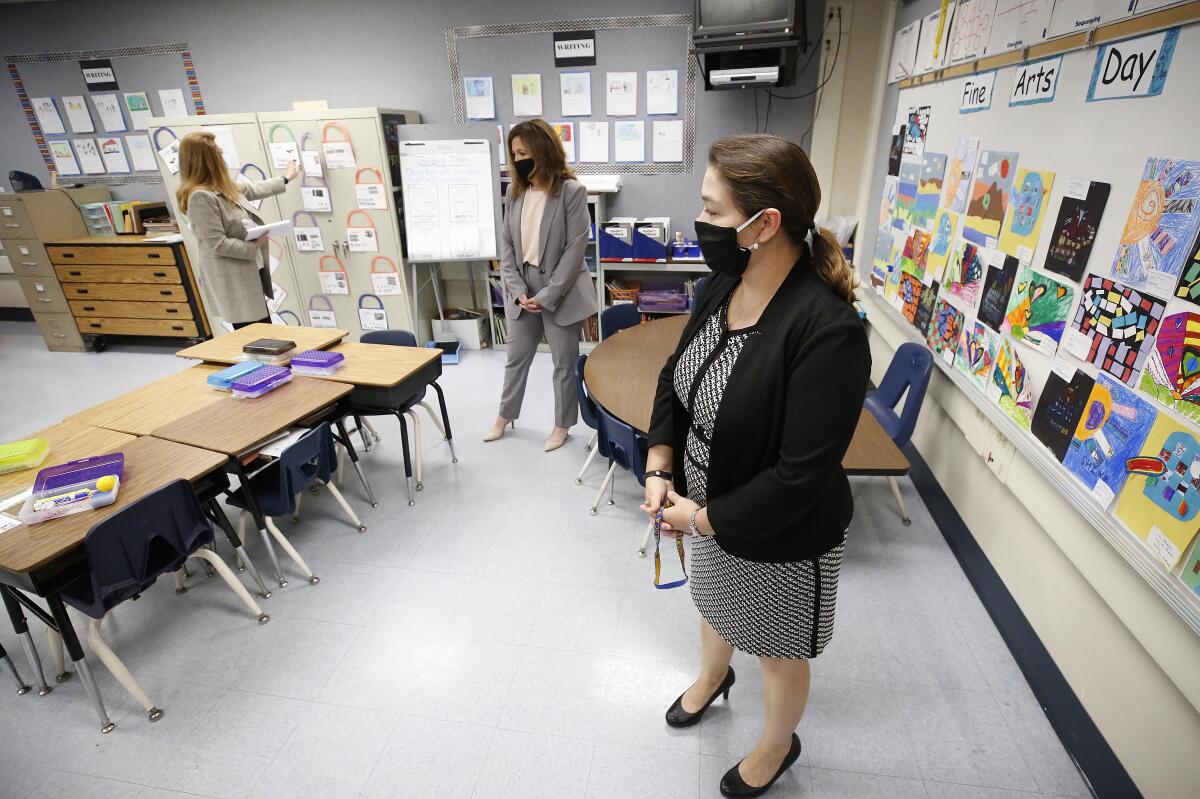Californians need more transparency over school district salaries

- Share via
For the last several years, California’s cities and counties have been required to send their payroll information to the state controller, who posts it on a public website. Such transparency helps Californians keep up with how local governments spend tax dollars on salaries and benefits — an important metric, as employee compensation constitutes the bulk of spending by most government agencies.
The requirement grew out of the 2010 Bell scandal, in which seven public officials were convicted of corruption after The Times reported that the little town was paying its city manager nearly $800,000 a year.
But school districts have never been required to submit salary data to the state controller. This basic act of transparency has been optional for K-12 school districts and charter schools — even though the state spends more on public education than anything else.
That needs to change, because the optional approach clearly isn’t working. Just 23% of public school employers submitted pay information for 2020, Controller Betty Yee announced last week. And it’s been that way for a while. For each of the last five years, roughly three-quarters of school systems have not sent their information to the controller.
Kudos to the districts that did the right thing and submitted their salary information to the controller. They include Los Angeles Unified, Long Beach Unified, Compton Unified and Torrance Unified. But too many districts have thumbed their nose at taxpayers by ignoring the controller’s request. Among them: the school districts in Beverly Hills, Glendale, Pasadena, Manhattan Beach and Irvine. Major Northern California districts that did not submit the data include San Francisco Unified and Oakland Unified, which are both in serious states of financial instability.
One of those that chronically didn’t report was the Ontario-Montclair School District in San Bernardino County. Turns out the superintendent of this mid-sized K-8 district has quietly become the highest-paid school administrator in the state — pulling in more than $600,000 a year by padding his salary with an unusual perk allowing him to cash out loads of sick time, the Southern California News Group recently reported. It took a reporter filing a public records act request and reviewing a dozen documents to get this information out.
Meanwhile, State Superintendent of Public Instruction Tony Thurmond was before the Legislature last week, telling lawmakers that school districts don’t have enough money to hire the staff they need — even though school funding is up. Schools got more money than ever this year, thanks to an influx of pandemic aid from the federal government and tax dollars from state residents benefiting from the strong stock market.
“Schools are saying that our costs are high,” Thurmond told an Assembly committee. “Our schools, like every sector in this state and in this nation, are also experiencing an unavailability of staff to hire.... When you look at the salaries that school staff get paid on average, it’s low.”
That may be the case, or it may not be. But it’s difficult for Californians to fact check a claim like this with the way school districts are allowed to keep their payrolls off the controller’s statewide database. The salary information published by the California Department of Education is very limited; it omits administrators altogether and doesn’t include non-salary benefits paid to teachers.
Since school districts are not volunteering the information, legislators should compel them to turn it over.
School districts get about 40% of the state budget every year and are responsible for one of society’s most important tasks — educating the next generation of Californians. Public education is an essential expense for the future of our society and state, but school districts have an obligation to be transparent with their spending. And that means putting their payroll data on the controller’s public website.
More to Read
A cure for the common opinion
Get thought-provoking perspectives with our weekly newsletter.
You may occasionally receive promotional content from the Los Angeles Times.









